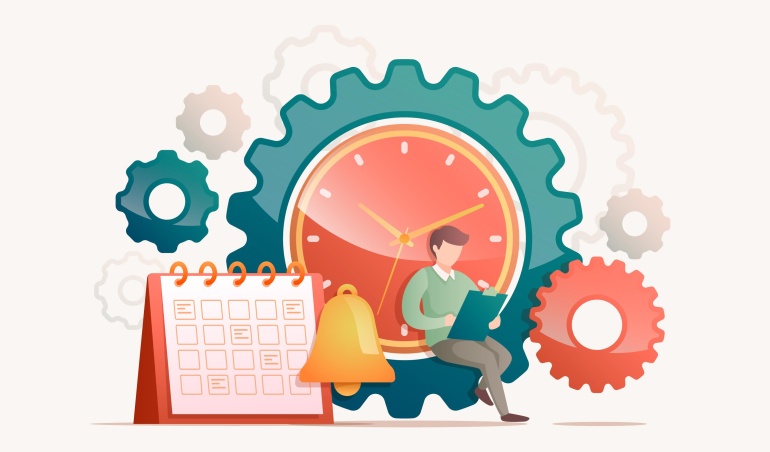Can university students effectively manage a balance between their academic studies and employment responsibilities? Most students nowadays find difficulties…


Can university students effectively manage a balance between their academic studies and employment responsibilities? Most students nowadays find difficulties…

The convenience of plastics comes at a cost. Are we willing to pay that price? Plastic is a synthetic…

Have you ever thought that you would be able to do shopping without even stepping a foot outside your…

“I’m not the woman president of Harvard, I am the president of Harvard”. This quote by Drew Gilpin Faust,…

School start times has been a subject of considerable debates in the education system over years. To wake up…

”Oh, the internet, you are a lucky generation! “, they say. Do you still remember what sage people, grandparents,…

“I feel mad. I feel mad because I had no idea that one guy with a gun could ruin my life so hard in six minutes. Ruin so many lives.”
Wydad Madani : Semester 3, Department of English Studies, Chouaib Doukkali University, El Jadida

Imagine traveling to the future and finding that some countries ceased to exist,
replaced by seawater, and forgotten, several animals went extinct, ecosystems
vanished, and our fellow humans are skinnier than normal.
That could be the case if climate change continues to be prevalent. Climate change has been subject to debate for many years, and it will remain for years to come. Although its consequences are becoming more and more tangible, some still consider it not to be a threat. However, the real case is that scientists have been sounding the alarm that climate change is still the number one threat to humans and all ecosystems.
Climate change is as old as human activity. Yet, we have only come to notice it over the last century. Scientists conducted their research and concluded that earth’s temperature is gradually rising due to the greenhouse effect. As a result, many summits were held in recognition of the issue.
Climate change is a threat based on several visible and plausible negative impacts. Lately, the world has been experiencing severe heatwaves that resulted in droughts and several deaths across the world, from January through August. The most notable heatwave in 2022 is that of China; with scorching temperatures exceeding 40 °C, at least 17 provinces were affected and suffered from water shortages and crop losses. Also, warmer weather is an ideal environment for mosquitos and ticks to breed; these insects being natural carriers of disease will increase the risk of transmitting various dangerous infectious diseases, such as Malaria and Dengue fever. Moreover, climate change is causing sea ice and glaciers to melt affecting wildlife and altering normal ocean circulation. In fact, scientists predict that two-thirds of the polar bear population will go extinct by the year 2050 due to climate change.
On the other hand, some do not label climate change as a threat. They argue that climate change is a normal phenomenon that occurred at certain points in history; the ice age, for example. And, that animals, plants, and eventually humans would adapt according to the natural selection theory. Although these claims have some truth to them, but whenever climate change happens, mass extinctions and serious environmental catastrophes also take place. Not only it endangers the environment but it has also been proven that it takes its toll on mental health. That and many more repercussions qualify climate change as a threat of utter significance.
To sum up, it is hard to deny that climate change is a pressing matter with regard to the events that we have witnessed in recent years; droughts, heatwaves, typhoons, hurricanes, etc. It is not a simple issue that we can turn a blind eye to. Thus, solutions must be put forward and implemented to prevent further consequences. As American physician-scientist, Kari C. Nadeau, said: “This is in our hands to do if we don’t do anything, that would be cataclysmic.”
Wydad Madani
Semester 3, Department of English Studies
Chouaib Doukkali University, El Jadida

It is said that the early bird catches the worm; but does that apply to university students?
As we all know, schools and universities all over the world start generally between 8:30 and 9:00 AM. Throughout our academic journey, all of us had to wake up and get ready at least an hour before 8:30AM for our classes. However, as we get older, our sleeping schedule becomes irregular which results in many complaints coming from university students stating that late classes are far more convenient and beneficial than early morning classes.
A study conducted in 1998 by Dr. Wolfson and Dr. Carskadon says that university students who reported poor grades claimed to be getting 25 fewer minutes of sleep than the students who reported getting higher grades. Another study from the University of Minnesota confirmed that later school start times can have a positive effect on academic performance. Investigators studied two school districts that changed their start times to 8:30AM and 8:40AM. When compared with students attending schools with earlier start times, the students reported getting higher grades. They also had fewer depressing feelings, got more sleep on school nights and had less daytime sleepiness. In addition, a recent study from RAND Europe shows that delaying school start times is cost-effective. Results suggest that starting school later could have a positive impact on the country’s economy.
All of the above mentioned studies confirm the link between later school start times and better grades, higher test scores, improved focus among university students, as well as a positive impact on the country’s economy. That’s especially important because discipline problems may lead to suspension, which is associated with a wide range of negative health and economic outcomes and is a major cause of educational inequity.
However, with all of these advantages that are definitely valid, some drawbacks cannot be ignored. For example, transportation challenges. Later start times will likely mean more buses on the road later in the day, this could create more traffic and increase travel delays. Furthermore, students who have part-time jobs may have scheduling conflicts as a result of this, which can lead to poor attendance and therefore poor grades.
Overall, later start times for universities can be a double edge sword since it improves students’ academic performance but it can create some transportation and work schedule conflicts as well. However, these problems can likely be solved with flexibility and thoughtful planning.
Khaoula Jraif
Semester 3, Department of English Studies
Chouaib Doukkali University, El Jadida